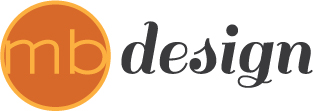Kern Health Manages Rapid Growth with HPA’s RPA-as-a-Service
Robotic Process Automation (RPA) is an ideal solution for the unique challenges facing many payers in the U.S. For Kern Health Systems (KHS), RPA was just what the health plan needed to keep up with rapid growth, both in claims volume and member services. KHS serves primarily low-income Medicaid members in California, and its broad provider network includes hospitals, facilities, primary care doctors, and specialists. KHS is dedicated to improving healthcare for its members through an integrated managed healthcare delivery system.
In 2015, KHS migrated from a legacy system to TriZetto’s QNXT™ Enterprise Core Administration System. As the KHS team began evaluating processes for automation, they focused on specific pain points in the claims lifecycle that were time-consuming and resource-intensive. The health plan was also experiencing rapid growth in membership and utilization, which prompted the need for a solution that would reduce overhead while allowing it to maintain a superior level of care for members. HPA’s healthcare automation experience and close relationship with TriZetto made the automation provider an ideal choice for KHS.
“Any business process that has a definitive path can be automated with HPA to gain operational efficiency,” said D’Ln Brown, KHS Configuration Analyst. “HPA’s automation has decreased processing times, allowing for faster payments to providers, denials, and consistent processing, removing the risk for human error.”
Improving Client Outcomes with RPA-as-a-Service
RPA is a perfect fit for health plans due to its efficacy in cutting costs, preventing errors, and scaling effortlessly to work volume. However, the RPA-as-a-Service model provides the added benefit of ensuring clients are paying for positive results, not licenses and additional support resources. For payers looking to reap all the benefits of RPA while avoiding the risk of building and maintaining a program in-house, RPA-as-a-Service (RPAaaS) can be a real game-changer.
For KHS, the RPAaaS offering made the experience as seamless as possible, from evaluation to go live. HPA’s automation specialists guided the health plan in evaluating process candidates and created an automation strategy that could scale to its growing business needs. “HPA’s automation specialist took the time to understand our internal processes and was able to improve our automation outcomes,” said Brown. “The timeline from initial discussion to implementation was minimal, and we were able to improve our automation outcome.” With HPA’s unique RPAaaS approach, automation specialists are very hands-on with the client team to make recommendations that improve current processes and success rates. According to Brown, this attention and dedication made a critical difference. As a result, KHS experienced a seamless implementation and was able to get its new robots up and running in the anticipated timeframe.
HPA’s services have revolutionized the way we work, from accuracy and speed to employee allocation. We are now able to handle processes optimally instead of straining our resources. HPA’s robots help us achieve our business goals as we continue providing top-notch service for members and providers, which is huge for us.Victoria Hurtado, MBA, PMP - Director, Information Technology Operations
Authorization Matching Robot - Claims that require authorization prior to payment may be pended in the QNXT system until they can be processed. Health plans are challenged by processing claims like these because different authorization matching rules and exceptions apply to certain services, members, and contracts. This process is time-consuming and can lead to a backlog of claims that examiners must manually service. However, HPA’s robots are able to search for authorization matches for members in the system based on data like provider name, service location, dates of service, and codes. If a match is found anywhere in the system, the robots will attach it to the claim.
With an average monthly volume around 7,000 per month and an average manual handling time of 5 minutes, prior authorizations created a considerable strain on KHS’s resources. Immediately after deployment, KHS quickly decreased its overall pended claims inventory. To date, KHS has saved more than 9,000 manual hours and enjoyed an average cost savings of 74%.
